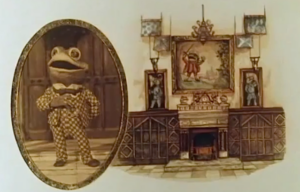06.29.23Beth Peakman Combines Cold Call, Wait Time and Stretch It While Reading Wind in the Willows

Toad of Toad Hall
We’ve recently had the pleasure of watching a few great videos shared with us by the team at Rivers Primary Academy in Walsall, England. The clips exemplify not just impressive implementation and adaptation of TLAC techniques but–pretty clearly, we think a culture that takes the support and development of teachers seriously. I’m going to share a few of their clips over the coming weeks, starting today with this lovely example of, among other things, Cold Call, Stretch It and Wait Time in Beth Peakman’s classroom during a reading of “Wind in the Willows.”
Here are some of the things we loved:
We love the way Beth previews that she his going to Cold Call and combines this with extensive (and transparent) Wait Time. There’s such deep synergy in those two moves. Cold Call is better when students can see it coming and when students have time to prepare. The Wait Time lets everyone do that. Bonus points to Beth for her careful scan during the “thinking time”: kind of fascinating to think about what she could be scanning for: who is engaged and who isn’t? who looks like they have something interesting to say? who needs a tiny bit of eye contact as encouragement? And of course we love Beth’s self-discipline. After she promises thinking time she delivers: about ten seconds of it! Just maybe part of the purpose of the scan is to slow herself down and make sure she doesn’t rush her pupils.
“Let’s go to…. Isla! Everybody track Isla.” We love Beth’s tone throughout… though you can really here it in the way she calls on Isla. She’s intrigued and welcoming- like she can’t wait to hear what Isla has to say. She walks toward her slightly and tilts her head as if t signal her fascination with what Isla might say. Not insignificantly, the message from the tracking of Isla’s peers also suggests that they value what she’s going to say as well.
Next there’s a round of follow-up questioning. Isla has rightly pointed out that Mole was embarrassed but Beth would like a little more. She wants to Stretch It and raise the standard of what a full and complete answer entails. But of course as she does this Beth’s tone is conversational, like they are chatting about the book, and her body language continues to encourage Isla and show her appreciation for what Isla’s said. Just lovely stuff.
In order to help Isla improve her answer she sends her back to the text–“Can you remember what he said?” she asks–but adds a brilliant little move. “Have a look everybody,” she says. This both causes everyone else to also look for the evidence…and make a habit of looking for evidence…but also subtly takes a bit of pressure off of Isla… it gives her a little time without everyone looking at her to step back and think. We LOVE tracking but we also love a teacher who recognizes a good moment to not use it.
Finally my favorite moment in the clip: “So should we say it again but say it better?” It’s a lovely way of pushing a student to refine her thinking by asking for a more complete answer. It feels like such a good thing–an opportunity–and she subtly gives Isla credit for her original thinking while also norming the idea of improvement.
And no surprise, Isla crushes it. At first her answer had been “I think he might have turned red because he was embarrassed.” Now she’s upgraded to: “I think Toad might have been feeling embarrassed because when he said, “My house is the finest house on the river, Rat nudged the Mole.” She’s added evidence, improved her syntax and embedded a quotation. And Beth has lovingly communicated the message that what we do with good answers is make them better.
No wonder there’s celebration at the end!
Thank you to Beth, her students (Go, Isla!) and the team at Rivers Primary for sharing their lovely teaching with us. More coming soon!
